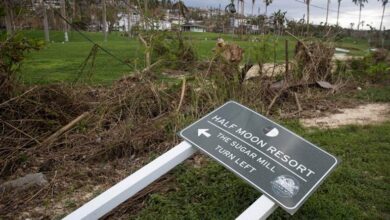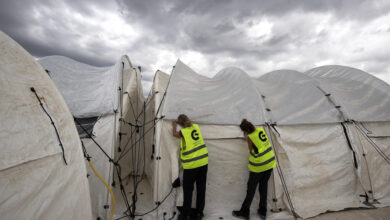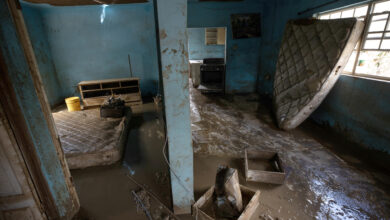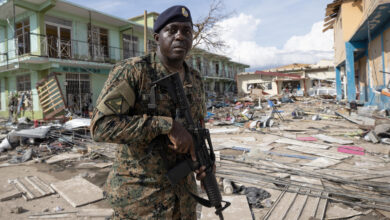Falmouth Without a Roof: Jamaica's Colonial Gem Battles to Rebuild After Hurricane Melissa
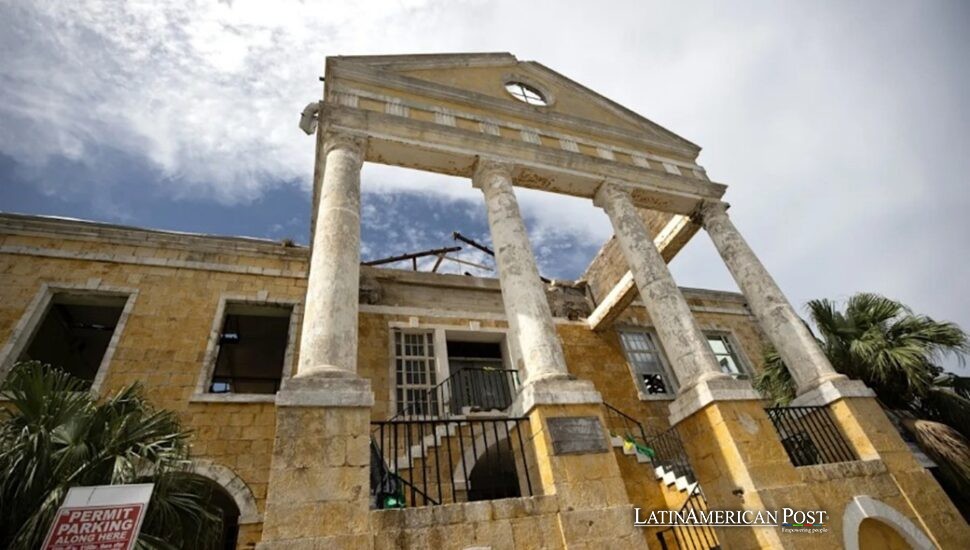
When Hurricane Melissa tore through Jamaica, it ripped more than roofs—it peeled back centuries. In Falmouth, the island’s Georgian jewel, residents now shovel mud, salvage memories, and face the hard work of rebuilding history itself.
Heritage Unroofed in the Heart of Falmouth
Before Melissa, Falmouth’s streets were an open-air museum—a grid of Georgian buildings, wrought-iron balconies, and pastel facades that told stories of sailors, merchants, and emancipation. Today, those same streets look like an archaeological dig. Power poles tilt like broken matchsticks, and a silence heavier than humidity hangs over the square.
The statue of Usain Bolt still stands in its protective wrapping, finger raised toward a sky stripped bare. Behind it, the courthouse roof is gone, its timbers scattered like kindling. Across the street, St. Peter’s Anglican Church, built in 1769, stands wounded: its ceiling peeled back, pews splintered, hymnals sodden with rain.
“The beauty of this city is gone forever,” said Althea Amy Henderson, a taxi driver who used to guide visitors through the town’s heritage circuit. She spoke to EFE beside the Bolt monument, her voice steady but distant. “I’ve seen storms before, but this… this was history itself being torn away.”
Founded during Jamaica’s plantation era, Falmouth once bustled as a sugar port and later reinvented itself as a heritage destination. Now, it faces a new kind of test—whether its people can restore not only the architecture of its past but the confidence of its future.
When the Second Wind Arrived
For a few deceptive minutes, Falmouth thought it might be spared. The hurricane’s first blast rattled windows but left roofs mostly intact. Then came the second wind—and with it, the sound that residents say will haunt them forever.
“The strong wind arrived and the roofs flew,” recalled Chef Stephen Edwards, standing outside what used to be his restaurant. “Houses collapsed, trees, debris everywhere,” he told EFE, the cadence of exhaustion in his words. Hurricane Melissa had made landfall at Category Five strength, the highest on the Saffir-Simpson scale, killing at least 32 people across Jamaica, according to EFE.
Edwards said he thought he was ready. “We prepared,” he told EFE, shaking his head, “but we couldn’t prepare enough for a Category Five hurricane.”
He isn’t alone in that realization. The storm has become a national reckoning—proof that the old measures of readiness no longer apply. Warnings must come earlier, and building codes must anticipate worse. In a town built on timber and faith, Melissa exposed the gap between expectation and experience.
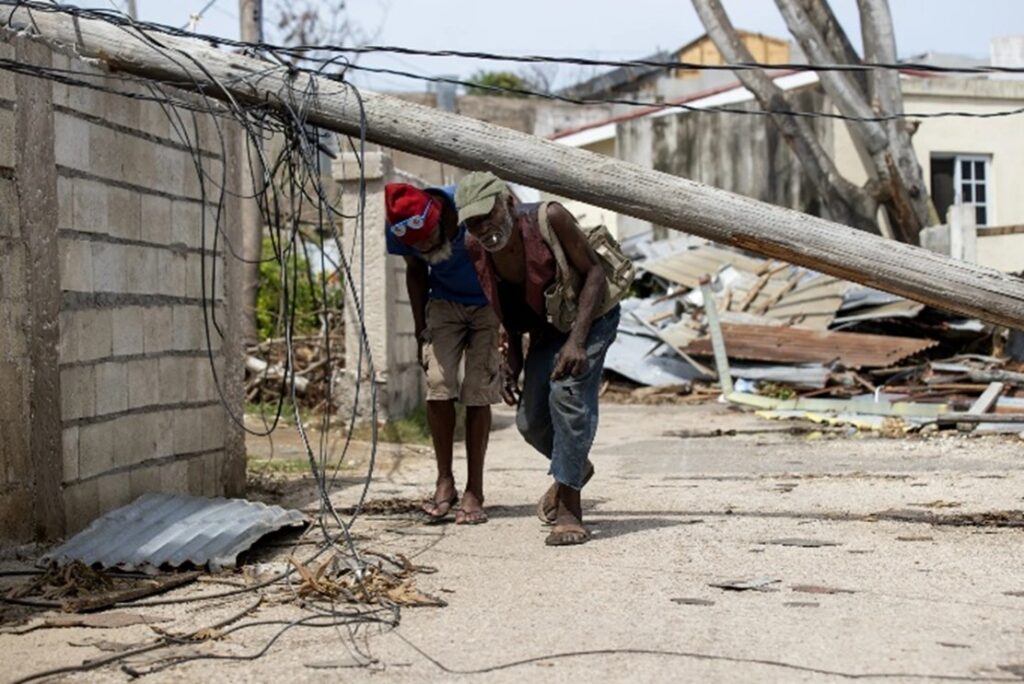
Neighborhoods Flayed to the Rafters
In the days after the storm, the sound of recovery replaced the wind—the metallic rattle of zinc sheets, the scrape of shovels, the murmur of disbelief.
On one narrow lane, Sheldon Myers, a 26-year-old mechanic, stands beneath the skeleton of what was his house. Only two panels of corrugated metal cling to the rafters. “It’s a catastrophe,” he told EFE. “We didn’t take it seriously enough. And this is the result.”
Across from him, a mound of broken boards marks where his neighbor’s home once stood. Down the road, the Trelawny Infirmary looks like a junkyard of twisted roofing, damaged wheelchairs, and palm fronds. The town’s hospital, once a safe refuge, now leaks from every corner.
At the cruise port, gateway to Montego Bay’s beaches, the scene is apocalyptic—a collapsed blue canopy, shipping containers on their sides, and flooded access roads. The tourists who once crowded Falmouth’s waterfront are gone, and locals wonder when—or if—they’ll return.
“We live on visitors and on hope,” Myers said, sweeping mud from his doorstep. “Both gone for now.”
The first phase of recovery, residents say, isn’t rebuilding. It’s clearing space—moving wreckage so that life, and memory, can fit again.
Starting From Zero and the Long Return
For Edwards, recovery begins each morning with the same ritual: sweeping mud, counting losses, and reminding himself what still stands. “There are many homeless and injured people,” he told EFE. “Countless businesses damaged, schools closed—everything is lost.”
Utilities are patchy at best. “We have no electricity, no water,” he said. “Only phone service, and that’s already fading.” For now, people line up at public taps, charge phones from car batteries, and cook over open flames.
In a town that once sold history as its brand, “starting from zero” feels like sacrilege. Yet amid the devastation, something stubborn remains. Neighbors share food, trade tools, and patch roofs. Children chase each other through puddles, laughing in defiance.
“Melissa was a huge disaster,” Myers told EFE, pausing to look at the rubble. “No one would ever want to live through it. But we’re alive. And that’s something.” He picks up a board, wipes it clean, and adds, “We just have to start again, day by day.”
Rebuilding Falmouth means more than replacing wood with wood. It means restoring heritage, using artisans who understand the town’s 18th-century craftsmanship—its fretwork, its symmetry, its soul. That will require money, skill, and patience—commodities as rare as dry plywood this week.
But locals believe the spirit that once built Falmouth can rebuild it. “This city has survived slavery, earthquakes, and time,” Henderson said. “It will survive this, too.”
For now, the colonial roofs lie shattered, but the will beneath them holds. On every street, amid the smell of wet timber and salt, Falmouth’s people are already doing the most challenging part of recovery—beginning.
Also Read: Cave Valley Digs Out of the Mud As Jamaica’s Heart Proves Unbreakable

